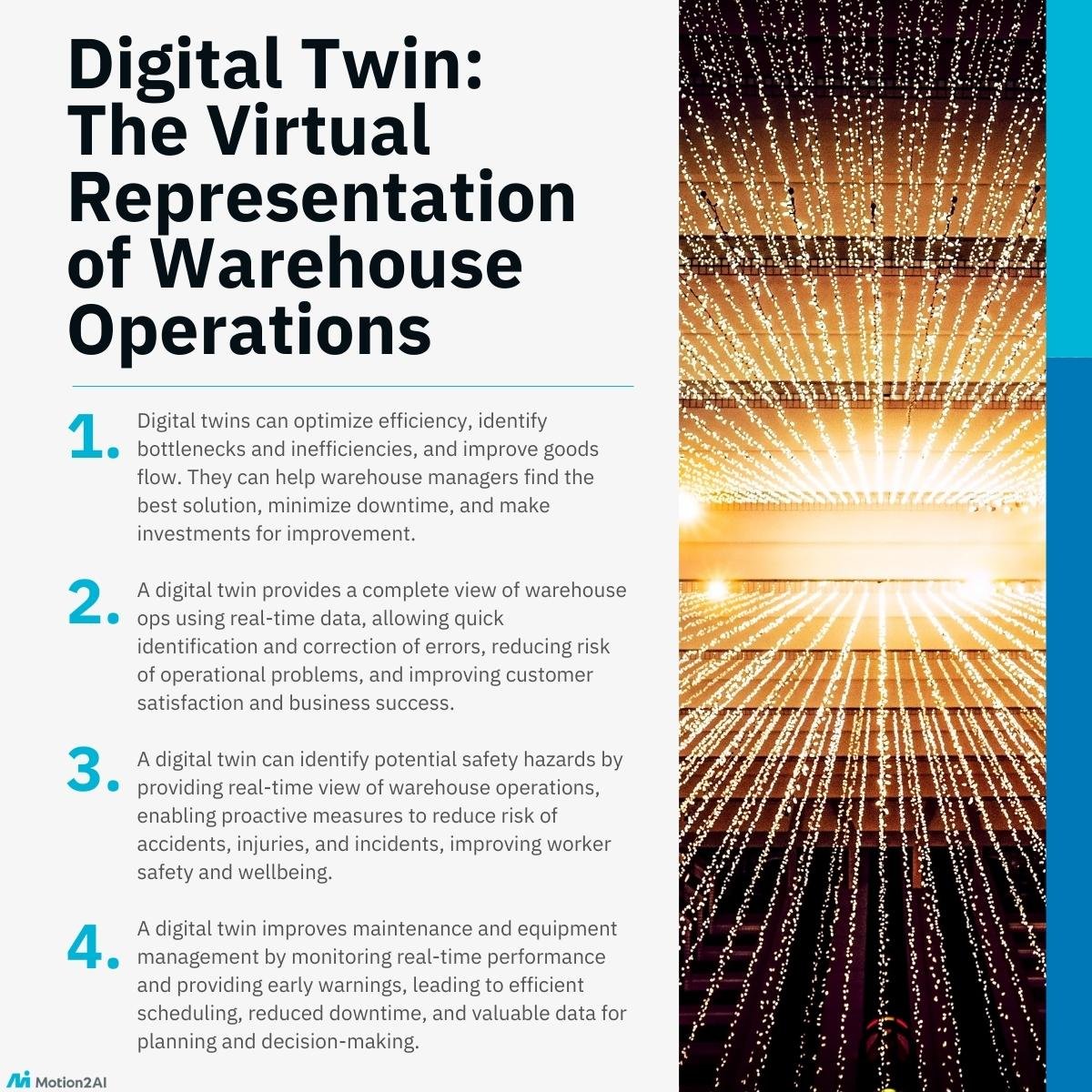In recent years, the concept of digital twin has become increasingly popular in the industrial world. A digital twin is a virtual representation of a physical object or system, allowing manufacturers and operators to simulate and monitor the performance of a real-world system in real time. This technology has proven to be a powerful tool in the optimization of complex systems such as power plants, oil refineries, and manufacturing facilities, and it has now begun to find applications in the warehousing industry as well.
What is a digital twin?
A digital twin of a warehouse is a virtual representation of the physical layout, systems, and processes of a real-world warehouse. By using a combination of real-time data from sensors and historical data from warehouse management systems, the digital twin can provide a real-time view of the entire warehouse operations, from the flow of goods through the warehouse to the performance of individual systems such as conveyors and storage racking.
One of the most significant benefits of a digital twin is the ability to simulate and optimize warehouse operations in real-time. By using a virtual representation of the warehouse, operators can experiment with different configurations, layouts, and processes to find the most efficient and effective solution for their specific needs. This allows them to identify bottlenecks and inefficiencies, and make changes to improve the flow of goods through the warehouse.
Improve warehouse efficiency
For example, a digital twin can help identify areas where goods are slowing down or being held up, allowing operators to make changes to the layout or process to improve the flow of goods and minimize downtime. This can also help identify areas where additional resources are needed, such as additional storage space, workers, or conveyors, allowing operators to make the necessary investments to improve efficiency.
In a study by McKinsey, warehouses using digital twin technology can improve efficiency by 20 to 25 percent.
💡 Digital twins can optimize efficiency, identify bottlenecks and inefficiencies, and improve goods flow. They can help warehouse managers find the best solution, minimize downtime, and make investments for improvement.
The digital twin provides a complete view of all warehouse operations, including the location and movement of goods, the status of equipment, and the performance of individual systems by using real-time data from sensors and historical data from warehouse management systems.
This real-time view of warehouse operations allows operators to quickly identify and correct any errors or inaccuracies that may occur, such as incorrect stock levels or misrouted goods. This, in turn, helps to reduce the risk of stock shortages, missed deliveries, and other operational problems that can impact customer satisfaction and business success.
💡 A digital twin provides a complete view of warehouse ops using real-time data, allowing quick identification and correction of errors, reducing risk of operational problems, and improving customer satisfaction and business success.
Sibling to improving safety
By providing a real-time view of all warehouse operations, including the movement of goods and equipment, the digital twin can help identify potential safety hazards, such as areas where goods or workers may be at risk of collision or injury.
This allows operators to take proactive measures to address these hazards, such as reconfiguring the layout or process, installing additional safety equipment, or providing additional training to workers. This can help reduce the risk of accidents, injuries, and other safety incidents in the warehouse, improving the overall safety and wellbeing of workers.
💡 A digital twin can identify potential safety hazards by providing real-time view of warehouse operations, enabling proactive measures to reduce risk of accidents, injuries, and incidents, improving worker safety and wellbeing.
As a preventative maintenance tool
A digital twin can also help improve maintenance and equipment management in the warehouse. By monitoring the performance and status of individual systems and equipment in real-time, the digital twin can identify potential maintenance issues and provide early warning of equipment failures.
This leads to more efficient scheduling of maintenance and repairs, reducing the risk of costly equipment failures and downtime. The digital twin also provides valuable data for long-term planning and decision-making, such as determining the need for replacement or upgrading of equipment. Overall, the use of a digital twin for improved maintenance and equipment management leads to a more efficient and reliable warehouse operation.
💡 A digital twin improves maintenance and equipment management by monitoring real-time performance and providing early warnings, leading to efficient scheduling, reduced downtime, and valuable data for planning and decision-making.
Digital twin return on investment
Warehouse managers should consider using a digital twin in their warehouse due to its ability to provide real-time simulation and optimization of operations. The use of digital twin technology can result in improved efficiency, accuracy, safety, and maintenance and equipment management.
By having a virtual representation of the warehouse, managers can make informed decisions based on data-driven insights and continuously improve their operations. Implementing a digital twin can lead to significant benefits for the overall success and competitiveness of the warehouse.
